The history of the main opera house in Belgium is significantly longer than the country itself.
The current Neoclassical building, however, was erected several decades after the country was established and has been altered several times.
Better yet, only the magnificent auditorium and the entrance hall of the building date back to the initial construction phase of the third building.
Let’s take a closer look at some of the most interesting facts about the history of La Monnaie, one of the most stunning buildings in Brussels.
1. It faces a square with the same name in the heart of the Belgian capital
The central part of Brussels is home to a large number of incredible landmarks, including the world-famous Grand Place, the iconic Manneken Pis, and the beautiful Royal Saint-Hubert Galleries.
Just north of the historic heart of the city, you can find what is in my opinion the most beautiful opera house in Belgium, La Monnaie.
It faces the Place de la Monnaie, a square that was named in its honor. Reaching this venue is easy as well because the “De Brouckère” metro station is located just a few blocks to its northwest.

2. The first opera house was constructed at the end of the 17th century
La Monnaie has a history that goes back to the late 17th century. It was part of a great redevelopment plan following the tragic Bombardment of Brussels that took place in 1695.
King Louis XIV of France used this onslaught to put pressure on the anti-France coalition at the time known as the “Grand Alliance.”

The result was that the central part of the city was just about completely flattened, with only the beautiful City Hall still standing on the Grand Place.
Many buildings in Brussels date back to the period shortly after the most devastating event in the city’s history, including the first version of La Monnaie which was completed between 1695 and 1700.
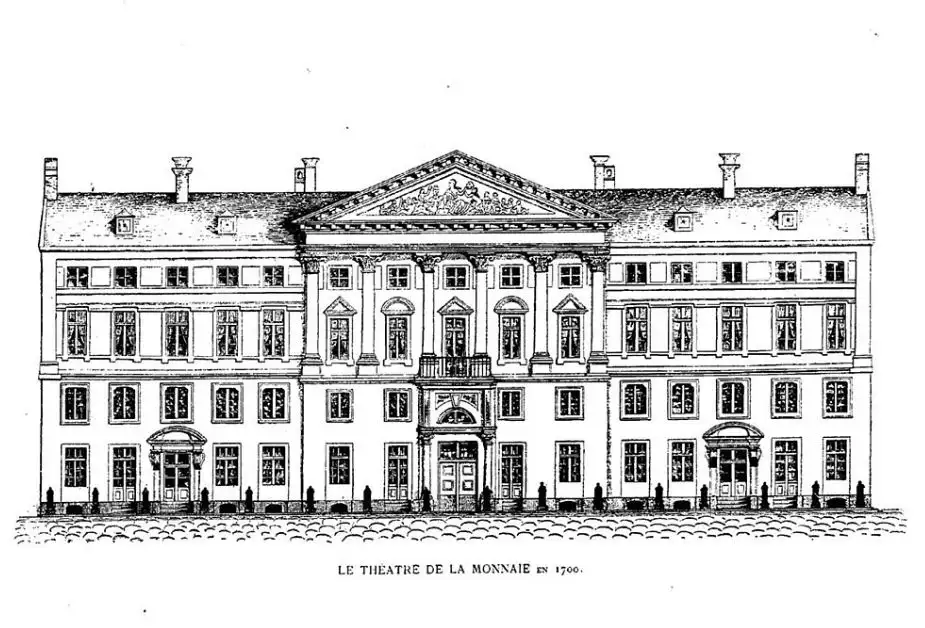
3. It was named after a former building that stood in this location
Maximilian II Emanuel, Elector of Bavaria was the governor of the Habsburg Netherlands of which Brussels was a part in the late 17th century.
He hired an architect named Gio Paolo Bombarda (1650-1712) to design the building for the first permanent opera house in the city.
This theater became known as “La Monnaie” or “The Mint,” a reference to the former building that stood in this location which was used to produce coins.
The first performance at the theater was held at an unknown date in 1700, shortly after it was completed.
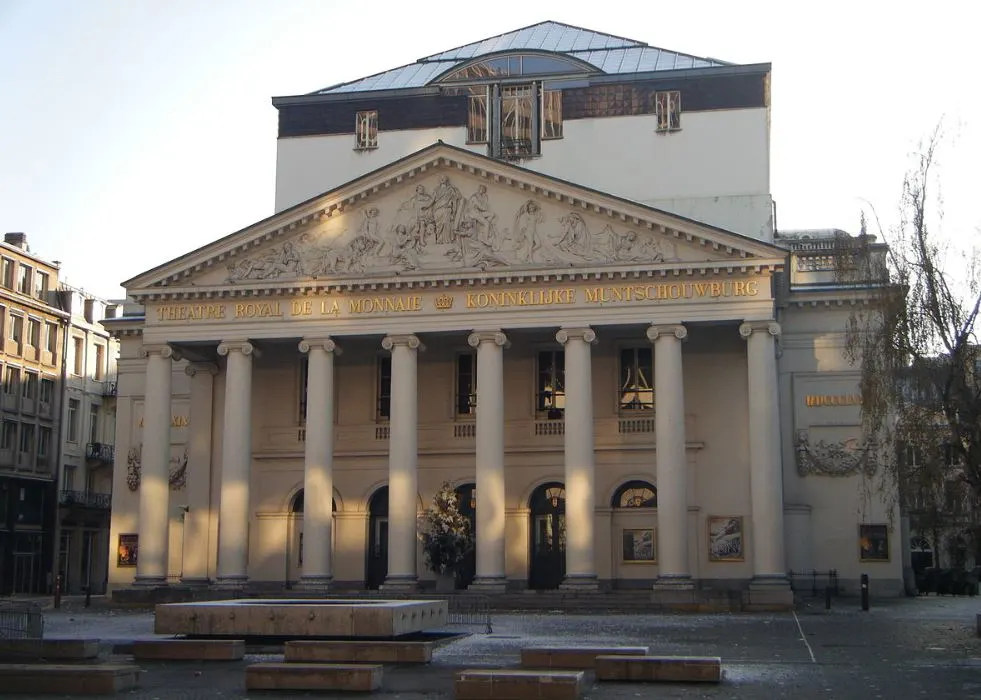
4. Napoleon commissioned a new building but nothing was done during his rule
The original building became one of the most prestigious venues for opera and theater performances in the 18th century.
Only the theaters in Paris were considered to be more famous than the theater in Brussels in the French-speaking part of Europe at the time.
Napoleon rose to power following the French Revolution and he considered Brussels to be a very important city in his future empire.
He did, however, find the original version of La Monnaie too humble for the grandiose plans he had for the city, so he commissioned a new version.
Nothing was done with his request until he already fell from power in 1818, the year that the second Neoclassical building was erected.
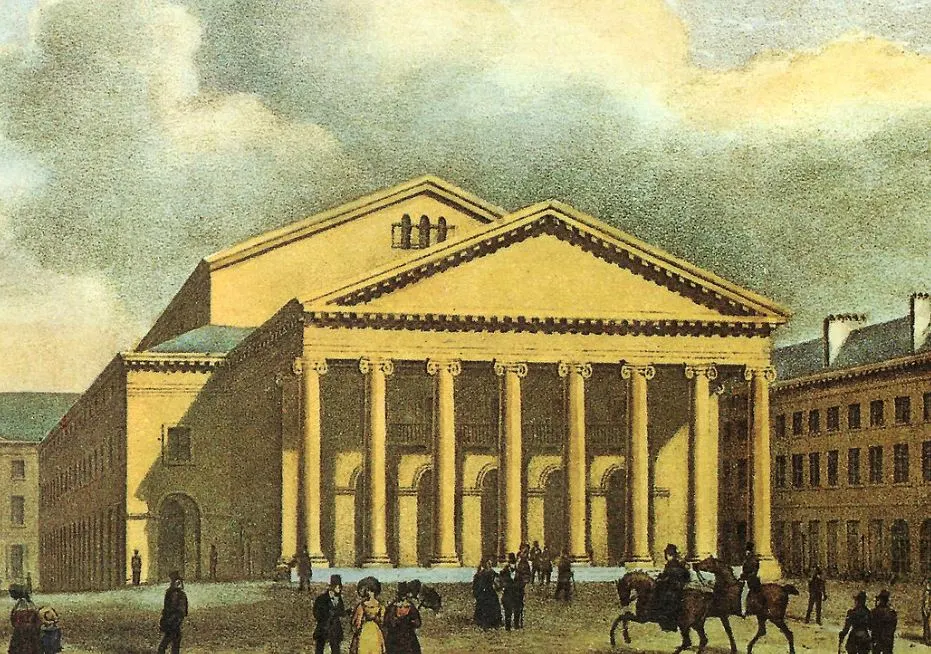
5. The second theater was destroyed by fire during the 1850s
La Monnaie is not only one of the most famous historic buildings in Brussels but it’s also intertwined with the history of Belgium.
When an opera titled “La Muette de Portici” was banned by King William I of the Netherlands because of its content, it incited the riot that he initially feared.
This riot turned into the Belgian Revolution, an event that resulted in the independence of Belgium as a country.
Designed by French architect Louis Damesme, the building burned to the ground in 1855 and only the Neoclassical portico and the outer walls still stood.

6. The third version of La Monnaie was designed by a renowned Belgian architect
The local government didn’t wait long to rebuild the prestigious building in Brussels. The brand new “Théâtre Royal de la Monnaie” opened its doors once again on March 25, 1856.
The building was designed by Joseph Poelaert (1817-1879), a Belgian architect who also designed the monumental Palace of Justice in Brussels.
The portico from the second version was integrated into the design but the other elements featured an eclectic mix of Neoclassical, Baroque, and Rococo architecture.
The highlights of this structure were the lavish decorations and the crystal chandelier that hung inside the 1200-seat auditorium.
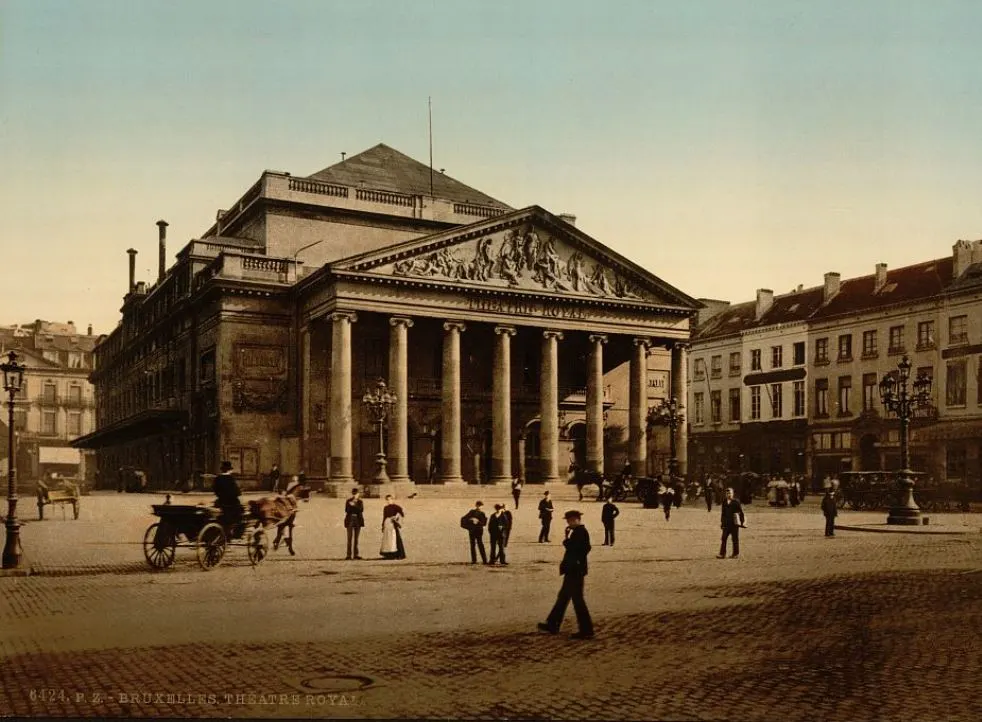
7. The building has been altered significantly and was completely renovated in the 1980s
The building was quite beautiful upon completion in 1856, but the foundation was too weak and required instant strengthening.
This initial renovation was one of many renovations that followed in the 19th and 20th centuries. An additional story and a new stage building were additional parts that were added in the 1900s.
The building got its current design in the 1980s, which included a new roof that elevated La Monnaie by another 4 meters (13 feet).
The auditorium’s capacity was reduced to 1125 and the newly renovated opera house was inaugurated on November 12, 1986.
The final renovation took place between 2015 and 2017 and this radically modernized many parts of this beautiful landmark in Brussels.
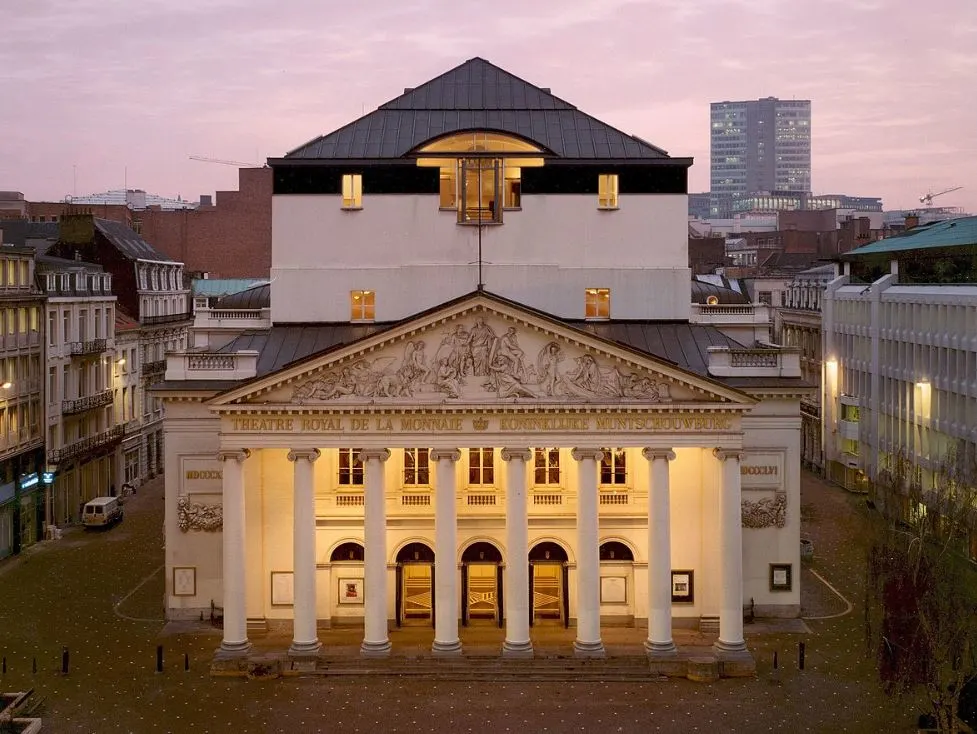
8. The opera house is the home of the National Opera of Belgium
La Monnaie, officially known as the Royal Theatre of La Monnaie, is the only opera house in Belgium that is supported by the federal government in Belgium.
It’s the most prestigious opera venue in the country and the home of the federally-supported National Opera of Belgium.
In my opinion, this opera house features one of the most beautiful auditoriums in the world, and that certainly means something.

